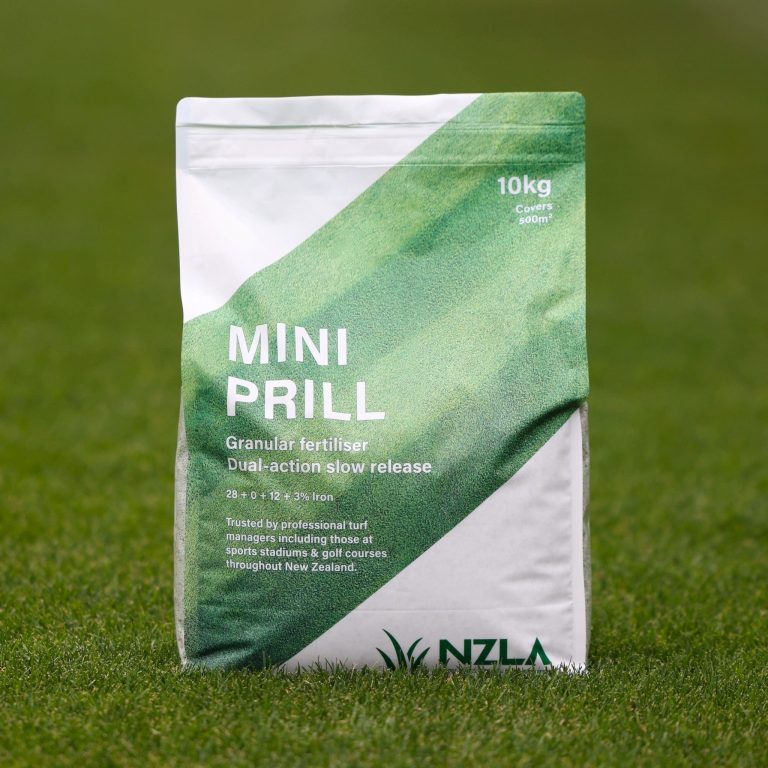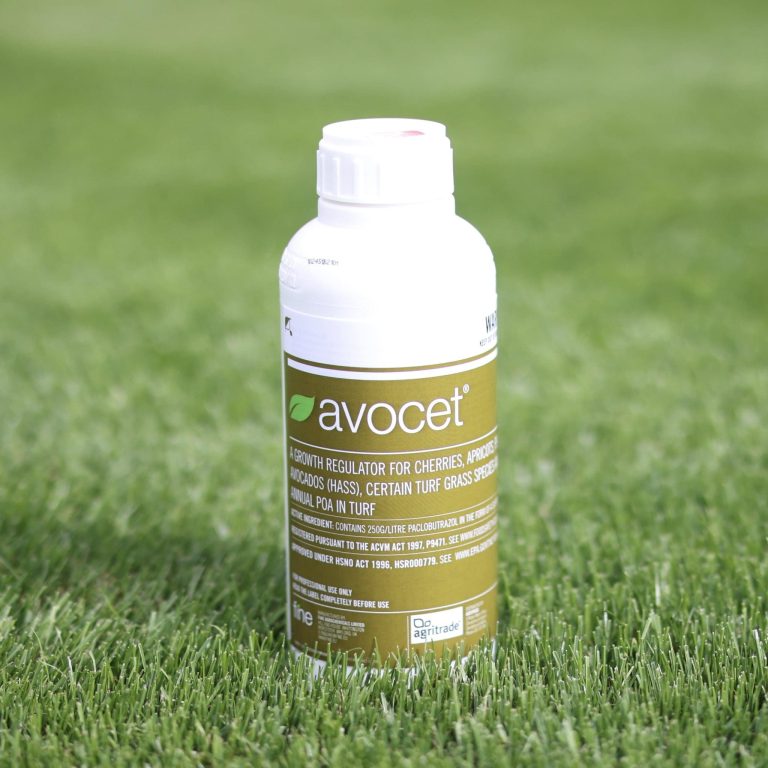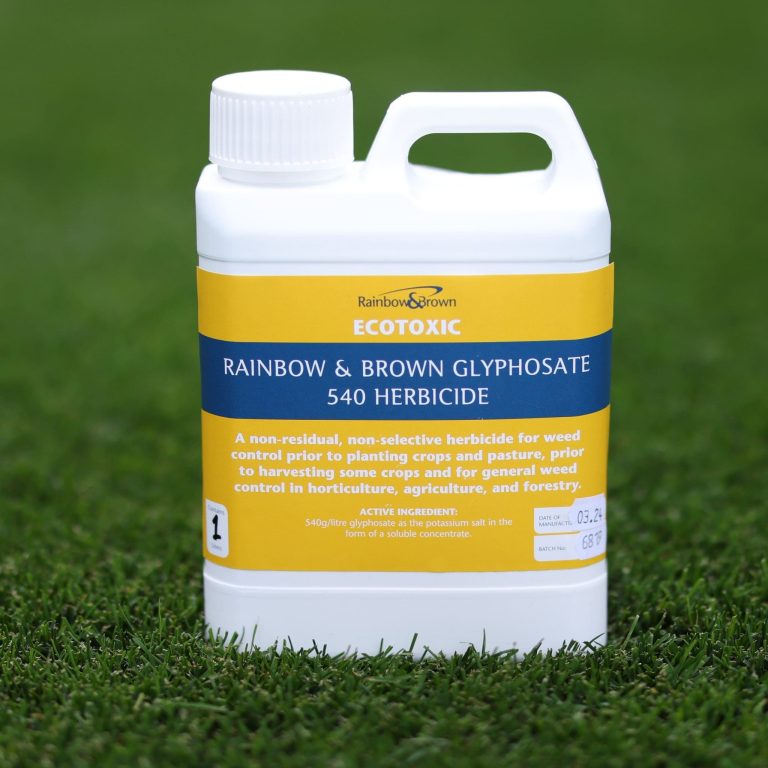NZLA Etho – Lawn Herbicide
Wanting to know more?
See more info about this product!
NZLA Etho — Selective Pre- & Post-Emergent Herbicide for Tall Fescue & Perennial Rye Lawns
NZLA Etho is a selective herbicide designed for Tall Fescue and Perennial Rye lawns. It provides both pre-emergent and post-emergent weed control when used properly. Only lawns consisting of pure Tall Fescue or pure Perennial Rye should be treated—do not use on Fine Fescue, as it can kill the lawn.
- Application rate: 40 mL per 100 m² in 4–5 L of water
- Pre-emergent use: follow with 3–5 mm of irrigation to push the product into the soil
- Post-emergent use: allow the spray to dry on the grass
Because Etho acts both through uptake by emerging weed shoots and by roots, it can suppress Annual Poa and Summer Grass, among other weed grasses and broadleaves.
How It Works / Mechanism & Safe Use
- For pre-emergent control, Etho must be applied before weed seeds germinate. The product forms a barrier that inhibits the early development of roots and shoots of weed seedlings.
- For post-emergent action, Etho acts on young weed shoots or leaves before the weed becomes well established.
- It does not harm Perennial Rye or Tall Fescue when they are healthy and established, but Fine Fescue is very sensitive and will suffer damage—hence, Etho should never be used on Fine Fescue lawns.
- There is some potential “knock-back” stress on Tall Fescue under poor conditions, so it’s best to apply when your lawn is in a healthy, actively growing state.
- Avoid applying Etho too close in time to PGR (plant growth regulator) applications to reduce stress.
Pre-Emergent Use & Strategy
- Etho can be used at the time of seeding a new 100 % Perennial Rye or Tall Fescue lawn, before the seed germinates. It does not stop the seed from germinating but suppresses weed seed germination, such as Poa and other foreign grasses.
- After spraying at 40 mL / 100 m², irrigate 3–5 mm to incorporate it into the soil.
- You may submit Etho with NZLA Meso in tank mix to broaden the pre-emergent spectrum. If you are topdressing, apply Etho/Meso on top of the new layer.
- Pre-emergent applications can be repeated every 2–3 months under normal conditions; during late autumn when Poa is more aggressive, this can be shortened to 6–8 week intervals.
- Note: On Tall Fescue lawns, it’s best not to mix pre-emergent and post-emergent Etho + Meso in the same application to reduce stress risk.
Post-Emergent Use & Timing
- Use Etho as a post-emergent on 100 % Perennial Rye or 100 % Tall Fescue at 40 mL / 100 m² in 4–5 L water.
- Wait 4 weeks after seed germination before using Etho in Tall Fescue lawns. In Perennial Rye, some studies suggest that post-emergent use can occur earlier (as soon as two weeks after germination), once seedlings reach about 1 inch in height.
- Etho is active through uptake by emerging shoots of weed grasses and by roots of certain broadleaf weeds soon after they germinate.
Weeds Controlled / Target Spectrum
Etho is especially effective against:
- Annual Poa (Poa annua)
- Summer Grass
- Chickweed
- Cleavers
- Fumitory
- Redroot Sow
- Thistle
- Spurrey
- Wild Portulaca
While Etho helps with Poa and some weed grasses, it does not replace a fuller-spectrum lawn herbicide (e.g. Triumph Gold) in your weed-control program.
To combat Annual Poa in Rye & Tall Fescue lawns, the best approach is:
- Apply 40 mL / 100 m² in 4–5 L water
- Immediately irrigate 3–5 mm to initiate the pre-emergent effect
- After 14 days, apply a second spray (same rate) and allow the product to dry on the foliage (for post-emergent benefit)
Application Tips & Best Practices
- Use a spray dye (such as NZLA Indicate) in your tank so you can avoid overlaps or misses. Note: NZLA Indicate degrades under UV (breaks down in sunlight) and is used at low rate (8 mL per litre of spray).
- Keep pets and children off treated areas until fully dry — ideally 24 hours.
- Etho is exempt from ACVM regulation (because it’s a lawn product). It’s not to be used on food crops, feed, or areas that will be grazed. It’s approved under the HSNO Act (Approval Code HSR000826).
- Active ingredient: 500 g/L Ethofumesate (suspension concentrate).
- The soil half-life for ethofumesate ranges from 5 to 14 weeks, and residual activity can last 4 to 8 months depending on soil conditions.
Customer Reviews
I use this to control Poa in my lawn - the horrid, light green winter grass that is a prolific seeder! Use this as a pre emergent to stop seed germinating and then follow up with a post emergent to kill any that's grown. Doesn't affect rye grass or tall fescue :)
Please log in to leave a review
Log InFAQs
No. Etho is not safe for Fine Fescue and can cause severe damage or kill those lawns.
Use 40 mL per 100 m² in 4–5 L of water, whether applying as pre- or post-emergent.
You should apply 3–5 mm of irrigation or rainfall right after treatment to help Etho move into the soil and work properly.
Yes, for pre-emergent programs, Etho can be tank-mixed with NZLA Meso. Avoid mixing for post emergent applications as this can stress the lawn.
Generally every 2–3 months under normal conditions. In periods when Poa is more active (late autumn), it may need to be reapplied every 6–8 weeks.
Etho targets Annual Poa (Poa annua), Summer Grass, along with weeds like chickweed, cleavers, thistle, spurrey, and wild portulaca.
- For Tall Fescue: Wait 4 weeks after germination before applying post-emergent Etho.
- For Perennial Rye: Some success has been noted as early as 2 weeks after germination, when seedlings reach about 1 inch tall.
Both. It’s absorbed by emerging shoots (in weeds) and by the roots of broadleaf weeds early after germination
If your lawn (Tall Fescue or Perennial Rye) is well established and actively growing, adverse effects should be minimal. Thin, stressed, or immature lawns are more vulnerable to “knock-back.”
Ethofumesate has a half-life of 5 to 14 weeks, and residual activity can last 4 to 8 months, depending on soil organic matter and environmental conditions.


